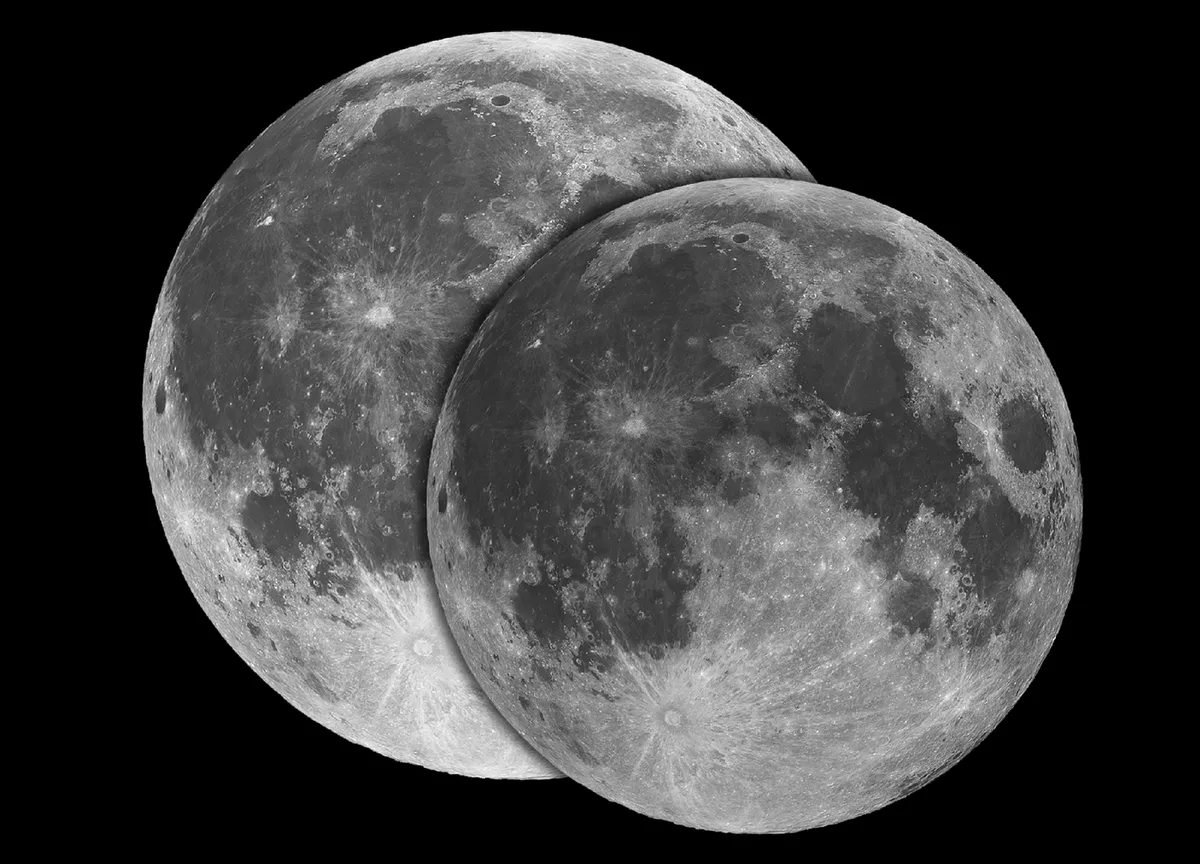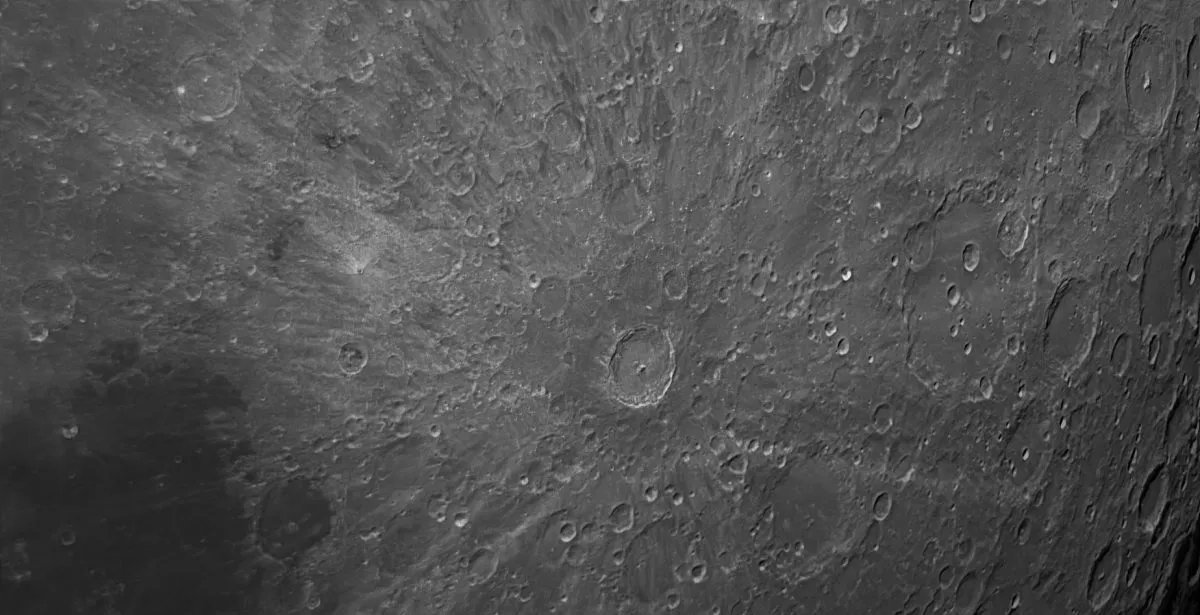As the full Moon rises on 6/7 October, it marks the first of three supermoons we'll see before the end of 2025.
That makes this week's full Moon quite a special one, and definitely worth observing.
Here are 6 reasons you should observe the full Moon tonight.
This full Moon is a supermoon

The full Moon of 6/7 October is a supermoon, which is the informal name given to a full Moon that's at the closest point to Earth in its orbit.
This happens because the Moon's orbit around Earth isn't a perfect circle. Instead, it's elliptical, or slightly egg-shaped.
Hence, sometimes the Moon is closer to Earth than at other times.
When the Moon is at its closest point to Earth, it's known as a perigee Moon. The opposite, when the Moon is furthest from Earth, is apogee.
A perigee full Moon – a supermoon – can appear 14% larger and 30% brighter, although in reality you're unlikely to notice the difference with the naked eye.
You can, however, capture the difference in size by taking photographs of the full Moon at perigee and at apogee, which you can see in the image above.
It's a reminder of the full Moon's significance, historically

The full Moon tonight is a supermoon, but it's also the Harvest Moon and the Hunter's Moon.
Every monthly full Moon has acquired a few informal nicknames over the centuries, each one reflecting annual events or changes occurring in nature during the month in question.
The October full Moon is known as the Hunter's Moon because traditionally October was the month during which hunters would be active, gathering meat and other food in preparation for the long winter months ahead.
And the closest full Moon to the September equinox is known as the Harvest Moon for the year.
That's because the full Moon near the September equinox has the smallest difference in rise times for the year.

This means that, during the evenings surrounding full Moon, the Moon rises at virtually the same time every night.
Historically, this would have meant the Moon was bright and full, illuminating the fields at the same time over the course of a few evenings, enabling nighttime gathering of the harvest.
Some years, the Harvest Moon is the September full Moon, but in 2025, it's the October full Moon.
So when you look up at the full Moon tonight, pause and reflect on the historical importance of the full Moon to the societies and cultures who relied on it as part of their annual calendar.
You can see the Moon and a planet in the same view

As the full Moon climbs higher in the sky under darkness, look to the right of it and you'll see a bright 'star' nearby.
That's the planet Saturn, which is currently visible with the naked eye from dusk til dawn.
Saturn has just passed opposition, which is when the planet on the opposite side of Earth from the Sun.
When a planet is at opposition, it appears much brighter than normal and is well-placed for observing.
If you have a pair of binoculars or a telescope, point it at Saturn for a closer look, and see if you can spot some of its moons, too.
Don't expect a good view of its rings, though, as they're currently edge-on from our perspective on Earth, and not well-positioned for viewing.
Tonight perhaps isn't the best night to observe a planet through a telescope, with the big bright full Moon nearby.
But now that you've located it, you can keep observing Saturn over the coming nights as the Moon begins to fade from our evening sky, making conditions much darker and better for planet observing.
The Moon may look enormous

If you're able to find a clear eastern horizon, you'll be able to watch the Moon rise, and may even be able to observe a well-known phenomenon that occurs when the Moon is seen low down.
It's called the Moon illusion, and it has the effect of making the Moon look much bigger than normal.
You may have already witnessed it before, if you've ever seen the Moon close to the horizon. Under the right conditions, it does look enormous.
This is not an effect of the fact that this Moon is a 'supermoon': it's an optical illusion that can be seen when any full Moon is close to the horizon, 'super' or otherwise!
No-one can exactly confirm why the Moon illusion happens, but it's a matter of perspective, probably caused by tall foreground objects like buildings and trees appearing tiny in comparison to the bright full Moon, making the Moon itself look huge.
It's a chance to see evidence of ancient impacts

Many astronomers and Moon observers will tell you that full Moon is the worst time to observe the Moon.
That's because during full Moon, the whole of the Earth-facing side of the Moon is basked in sunlight.
All those wonderful lunar seas, craters, mountains and valleys are washed out and hard to see.
Conversely, when the Moon is in its crescent or gibbous phase, the terminator – the line dividing the lit and unlit portions of the Moon – highlights these features, making them more prominent.
There are even well-known clair-obscur effects visible on the Moon at certain times, caused by the play of light and shadow on the lunar surface.
These are not visible when the Moon is full. But there is one feature that's well-seen on a full Moon, and that's lunar rays.
These are mostly caused by ejecta from ancient impacts on the Moon, and are beautiful features to explore.
Among the most famous are those of crater Tycho and crater Copernicus.
It's great inspiration for kids and beginners

Weather permitting, the full Moon is visible without the need for binoculars or a telescope.
You don't even need to get away to a dark-sky site and escape light pollution to enjoy it.
The Harvest Moon 2025 can be seen from towns and cities easily with the naked eye, but you will need a clear horizon to watch it rise.
For these reasons, full Moons like the Harvest Moon are great for beginners and kids.
If you're observing the Harvest Moon this week with family and friends, see if you can photograph the Moon with your smartphone.
Or have a competition and see who can produce the best sketch of the Moon.
You can also use the fact that this full Moon is a supermoon as a chance to discuss its orbit around Earth, and how at some points it's closer to our planet than at other times.
Share your Harvest Moon observations and images with us by emailing contactus@skyatnightmagazine.com

